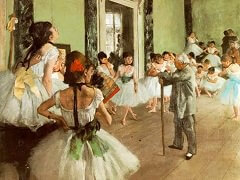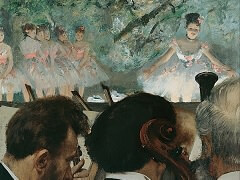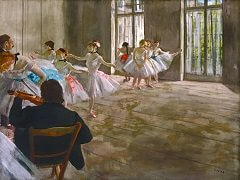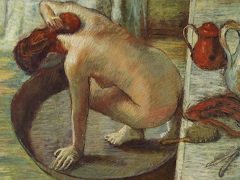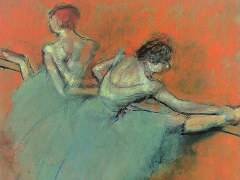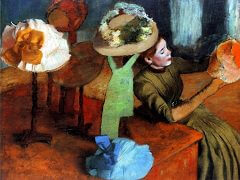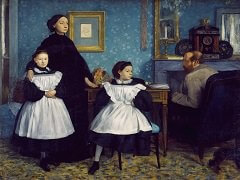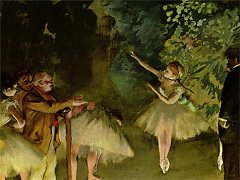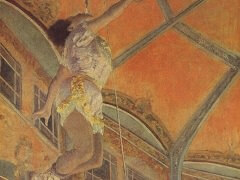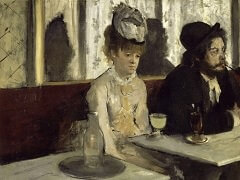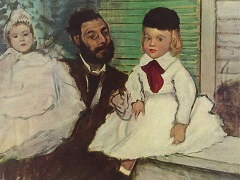The Morning Bath, 1890 by Edgar Degas
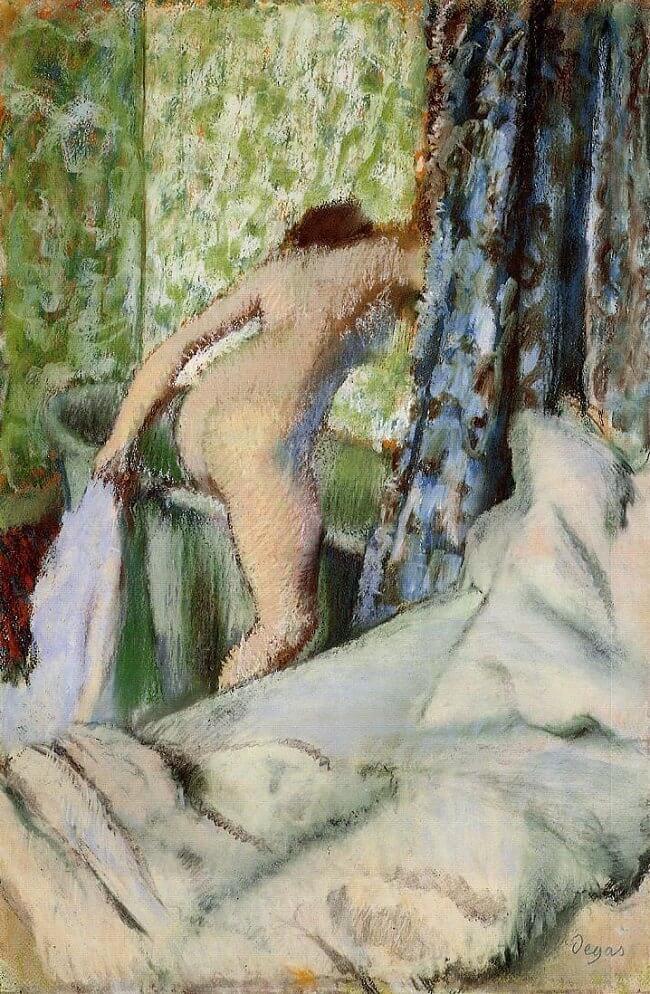
As he progressed with drawing and painting nudes in interiors, the artist caught them in more and more active moments, leaping in and out of the tub or twisting in strange and distorted positions. Here the angle of vision is abrupt, and movement is rendered not only by the figure but by the strong zigzag of line starting in the lower right edge of the picture and carrying back through the tub and the glimpse of the wall.
The foreground, with its subtle transformation of white bedclothes into scintillant blues and greys, is contrasted with the zones of rich patterns in the curtains and walls behind. The figure diagonals into deeper space and is treated in a summary, broad manner, the painter strengthening certain lines and blurring others to suggest a sense of interrupted action. By this time Degas had freed himself from the bonds of realism; his drawing is powerful and abbreviated and his forms exist less as an impression of nature than for the part they play in his organized design. The brilliance of the blues and greens forces the warm tones of the flesh and throughout the artist seizes upon cross reflections of light, playing one light upon another rendered through dots and strokes of vivid color. Such unusual harmonies may be in part derived from his studies of Oriental art, particularly from rugs and textiles which he collected enthusiastically during this period.



